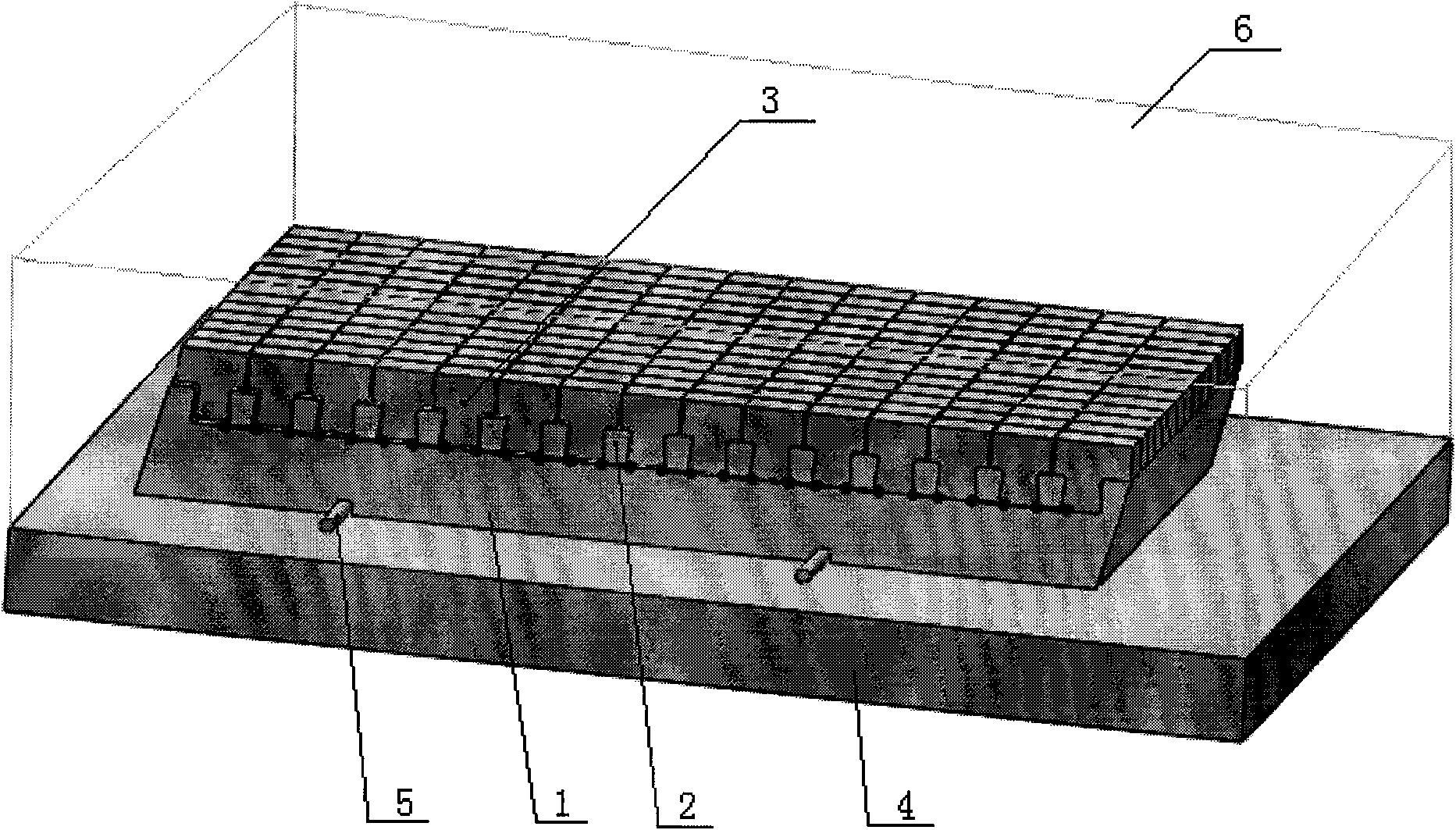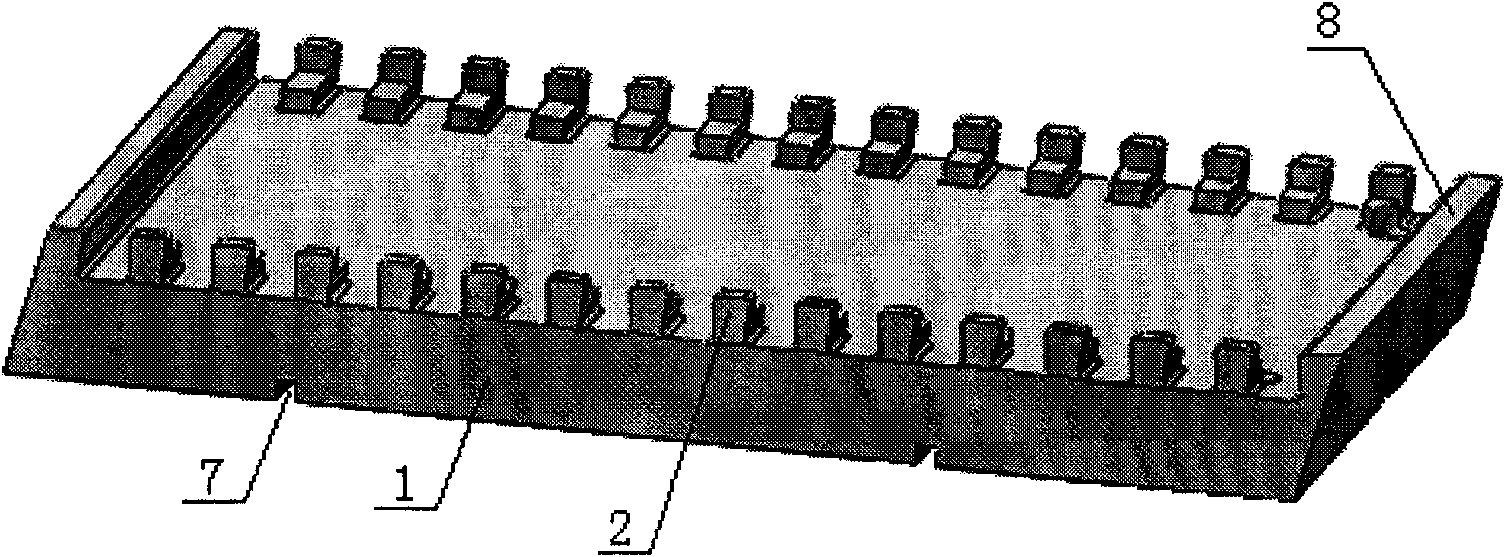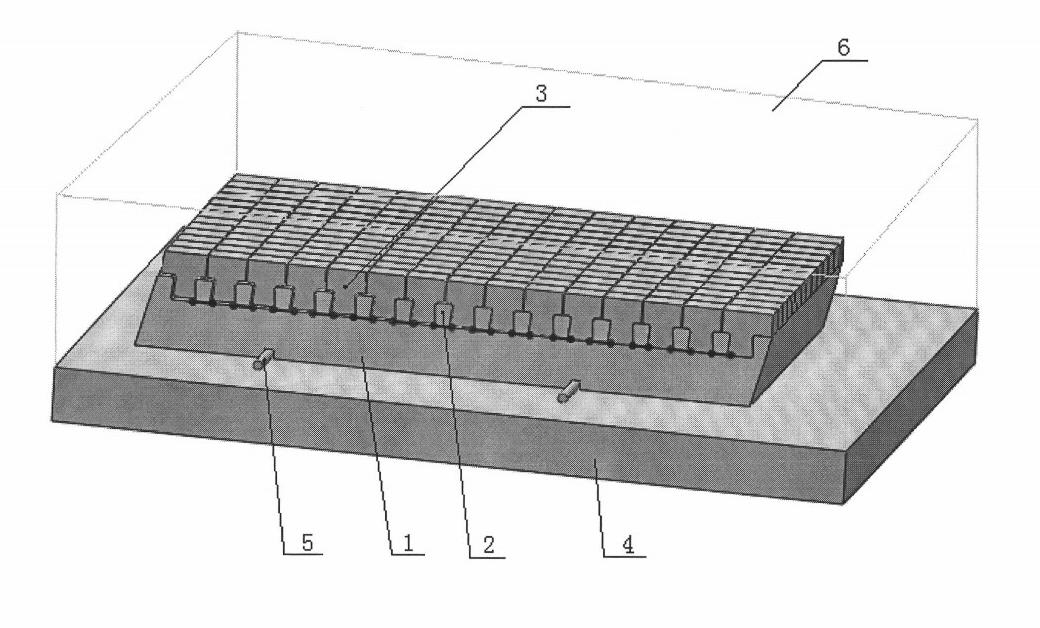Brick inlaying method for fully covered thermal inlaid brick cooling wall
A stave, full coverage technology, applied in the direction of the cooling device, etc., can solve the problems of reducing the service life of the stave with full-coverage hot-mounted bricks, bricks and bricks are not easy to be tight, and gaps are easy to produce, so as to reduce the workload of post-processing , Improve product quality and qualification rate, and avoid cracks
- Summary
- Abstract
- Description
- Claims
- Application Information
AI Technical Summary
Problems solved by technology
Method used
Image
Examples
Embodiment Construction
[0014] The specific embodiment of the present invention will be further described below in conjunction with accompanying drawing:
[0015] A method of inlaying bricks for a full-coverage heat-inlaid cooling wall, first inlaying inlaid bricks 3 in a wooden mold 1, and then making a sand mold, the operation steps are described as follows:
[0016] 1) Paste refractory asbestos paper with a thickness of 2 to 4 mm on the side and bottom of the inlaid brick 3 with silica sol with a density of 1.17 to 1.19, and dry at 200° C. for 1 hour;
[0017] 2) Set the wooden mold 1 on the workbench 4, place the inlaid bricks 3 pasted with refractory asbestos paper on the wooden mold 1, and beat with a rubber hammer to make the inlaid bricks 3 close together, and the inlaid bricks 3 have a dovetail shape. Put the loose block 2 into the gap at the bottom to block the dovetail-shaped gap at the bottom of the inlaid brick 3 to prevent the molding sand from entering and form a complete model;
[00...
PUM
 Login to View More
Login to View More Abstract
Description
Claims
Application Information
 Login to View More
Login to View More - R&D
- Intellectual Property
- Life Sciences
- Materials
- Tech Scout
- Unparalleled Data Quality
- Higher Quality Content
- 60% Fewer Hallucinations
Browse by: Latest US Patents, China's latest patents, Technical Efficacy Thesaurus, Application Domain, Technology Topic, Popular Technical Reports.
© 2025 PatSnap. All rights reserved.Legal|Privacy policy|Modern Slavery Act Transparency Statement|Sitemap|About US| Contact US: help@patsnap.com



